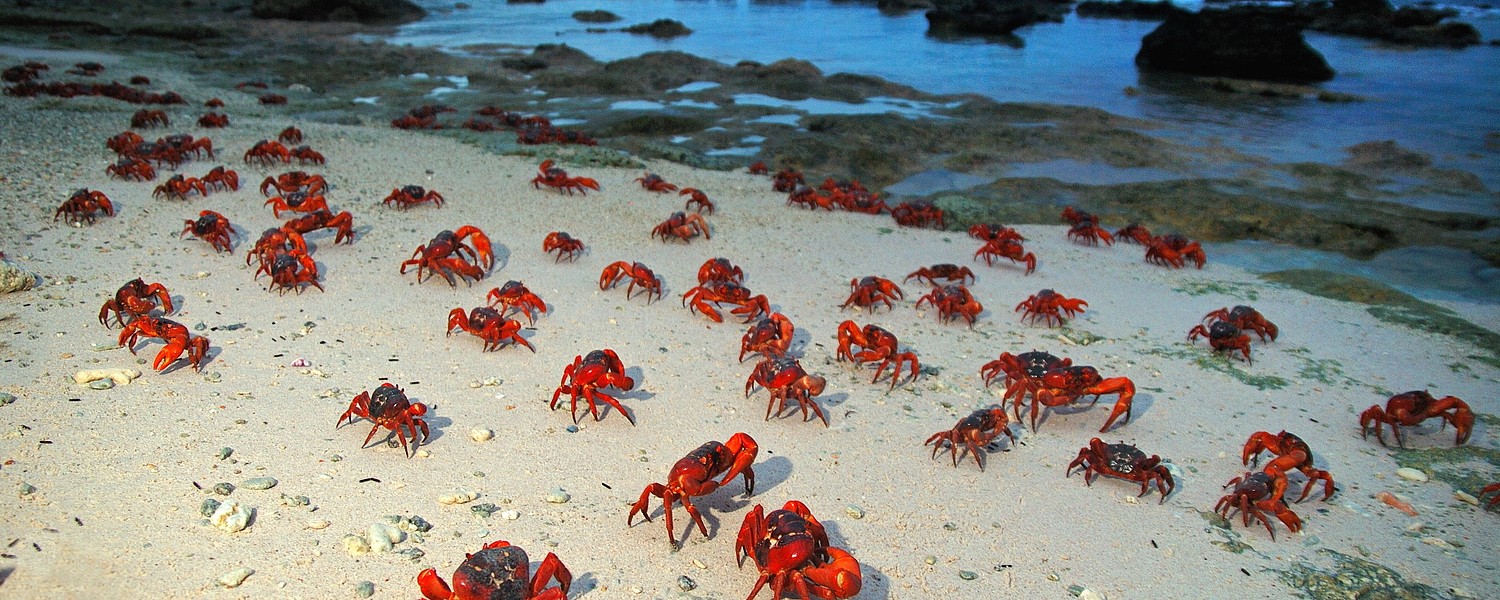Section in Christmas Island
Top 10
Christmas Island is a nature-lover's dream. You'll be spoilt for choice when it comes to the huge range of nature-based activities available. Perhaps you'll need more than one trip!
Whether you are visiting to witness the magic of the red crab migration, discover the huge robber crabs that inhabit the rainforest, dive with whale sharks, relax on deserted beaches, or photograph a Golden Bosun in its regal flight, knowing what to expect ensures you get the best out of your escape.
Read more



/logo.png)









